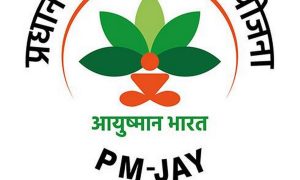Absence of regulatory oversight, a puzzling medley of land rules, diversion of money paid by homebuyers to unscrupulous builders, supply that outpaced demand, a credit crunch and collapsing returns have contributed to NCR becoming the location of more abandoned housing projects than any other part of India.
Large parts of Noida, Greater Noida and Gurugram in the National Capital Region (NCR), on the outskirts of New Delhi, resemble ghost towns. bereft of human inhabitants and pockmarked by half-finished edifices.
The COVID-19 pandemic now in its third year, the crisis that embroiled non-banking financial companies in 2018 or the sudden withdrawal of high-value banknotes in 2016 may have contributed to, but weren’t entirely responsible for these derelict neighbourhoods.
Read More:- Daughters To Inherit Father’s Self-Acquired Property If No Will: Supreme Court
Absence of regulatory oversight, a puzzling medley of land rules, diversion of money paid by homebuyers to unscrupulous builders, supply that outpaced demand, a credit crunch and collapsing returns are equally to blame for NCR becoming the location of more abandoned housing projects than any other part of India.
NCR has the maximum stalled stock of 113,860 units (valued Rs 86,463 crore), or 66% of the total across India’s top seven cities. Of the total stalled units in the region, 50% is in the mid-segment, followed by 24% in the affordable segment, 20% in the premium segment and 6% in the luxury category, according to an analysis by the property consultant Anarock.
The problem is not limited to the stuck projects of Unitech Group, Amrapali Group and Jaypee Group that have received public attention because of high-profile court battles. It’s also about properties located in inhabitable locations that were bought by investors or punters and legacy issues confronted by real estate developers.
Pre-RERA legacy
Before the Real Estate (Regulation and Development) Act, 2016, was enacted, avaricious developers utilised the proceeds collected from homebuyers in existing projects to acquire new land banks and launch new projects, which they eventually abandoned, leaving buyers in the lurch. Most projects that are incomplete belong to the pre-RERA regime, real estate experts say.
The Comptroller and Auditor General (CAG), in a performance assessment report on the Noida Authority presented in the Uttar Pradesh assembly last month, observed a raft of ‘irregularities’ in land allotment and approval of development plans because of a nexus between builders and officials.
This led to a loss of Rs 55,000 crore to the state exchequer between 2005 and 2014, the report said.
“As a result of dilution of the financial eligibility criteria for larger plots, builders with less financial capability were able to garner larger plots which was one of the reasons for non-completion of a large number of housing projects resulting in distress to homebuyers of such incomplete projects… In addition to this, huge outstanding dues of over Rs 18,000 crore of Noida were pending against Group Housing allottees as on 31 March 2020. Only 37.17 percent of the Group Housing projects sanctioned during the audit period had been completed,” the government auditor said.
Noida, Greater Noida and Gurugram
In 24 housing schemes in which allotments were made during the period from 2005 to 2018, 130,005 flats were sanctioned for construction, of which only 72,697 flats had been completed as of March 31, 2020. As a result, homebuyers are saddled with incomplete apartments in which they have invested their life savings.
Noida Authority, in spite of being aware of what was going on, failed to act against the builders and also failed to take action against its own officials for dereliction of duty, the auditor said.
Greater Noida accounts for 50% of stuck or delayed units in the NCR, followed by Noida with a 16% share.
Read More:- Budget 2022: Budget expected to restore consumer confidence
In Gurugram, nearly 40,380 units, or a 12% share of the total in NCR, are stuck or delayed. Ghaziabad comprises 10% of the overall share of such projects. Delhi has nearly 15,740 units stuck or delayed, nearly 5% of the total. The remaining 7% of such dwellings are located in Bhiwadi and Faridabad.
According to Vaibhav Gaggar of legal firm Gaggar & Associates, several developers in NCR are embroiled in litigation and trust in property builders is at an all-time low. Homebuyers are in a wait-and-watch mode also because they are unsure how the market is likely to react given three waves of the pandemic.
A baffling policy
While there have been construction delays in both Noida and Gurgaon, Noida has had its unique set of problems. One reason why several developers made a beeline to launch projects in Noida between 2005 to 2011 was availability of land at affordable prices.
Noida also had a baffling policy that, experts believe, allowed builders an easy run. The 2007 policy allowed realty companies to own land and launch projects by paying just 10% of the land cost. They were allowed to pay the balance in instalments over several years.
That’s not the case in the other markets such as Gurgaon, Mumbai or south India where builders are required to pay upfront for land.
Thousands of investor buyers cashed in on pre-launch offers that allowed them to book apartments at heavy price markdowns. The prices were raised immediately after the projects were actually launched with all necessary approvals.
This produced a whole new class of investors who parked surplus funds in these offers. This was the time when one could book an apartment by paying only 10% of its value, and then exit by transferring ownership to another buyer at a premium of 30% or more that they invested in another project.
This created a false sense of demand, and a fragile financial pyramid of sorts. As people flocked to park surplus funds to earn a quick buck, realty companies went on a binge, announcing projects by diverting funds from existing ones where bricks were still being laid.
In many cases, the same group of builders that was launching projects in Noida was launching projects also in Gurgaon. The problem of stuck projects in the NCR was, therefore, widespread unlike in other cities, experts said.
Popping of the bubble
The cycle had to end because eventually the apartments had to be handed over to owners who actually wanted to live in them. Moving funds across projects meant most builders fell short of funds to complete many apartment blocks, leading to the piling rubble of unfinished projects.
Also, realty companies were perhaps taken in by the interest shown by investors in their projects as a sign of actual demand for houses. This buoyed them to launch even more projects to meet the extra demand which actually did not exist, setting off a chicken-and-egg cycle.
It took a few years to call the bluff of pre-launch offers. Many builders launched projects and collected booking amounts from unsuspecting buyers without having the requisite approvals in place.
As clearances took a long time coming, projects got delayed even further, compounding the problem. And as returns on real estate eased, even investors refused to pay the developers, leading to high defaults and plummeting sales.
“As long as property prices were rising, the investor community remained interested. But the slide in demand and the resultant fall in prices since 2014 led to a rush of exit by investors and defaults,” said Pankaj Kapoor, managing director of Liases Foras, a Mumbai-based real estate rating and research firm.
Yet another reason for NCR’s massive inventory is that in many of the areas where these projects have come up, the ecosystem for human habitation is missing. With end-users scouting for best deals in the market, that too only in ready-to-move-in properties, developers are getting hit where it hurts the most: their cash book.
“Several properties are still in far-flung, inhabitable locations. After demonetisation, RERA and now three waves of COVID-19, Noida too is an end-users’ market due to which it is primarily the completed projects or soon-to-be completed projects that are gaining traction,” Kapoor explained.
“Also, if one were to look at the unsold inventory data, unlike the MMR (Mumbai Metropolitan Region) where housing sales have touched the pre-COVID levels on account of the stamp duty cut, in Delhi-NCR, sales have not yet recovered, he said.
In the second quarter of financial year 2022, 8,400 units were sold and the number of unsold units was 162,209, he said.
Greater Noida’s share in overall sales declined to 29% in the second half of 2021. Greater Noida has witnessed traction in the past few months for ready-to-move- in homes, but non-delivery of promised homes to homebuyers continues to mar its reputation.
‘Endless suffering’
Several issues continue to plague the Noida real estate market after three waves of the pandemic. While the completion of stuck projects is still a problem, another is that of registries not being allowed for Sports City projects.
Rajiva Singh, president of the Noida Federation of Apartment Owners Associations (NOFAA), told Moneycontrol that real estate developers and the Noida administration have been at loggerheads odds for over half a decade now.
“The administration seems to be constantly attempting to find ways to collect pending dues from the developers. The disagreement between the two has resulted in endless sufferings for homebuyers. Changes in Floor Area Ratio (FAR), frequent flouting of building regulations and building codes by developers make the situation very difficult,” he said.
“Several homebuyers have received possession but their registries are still pending as builders have not been issued completion certificates and the infrastructure is still incomplete.
While RERA has made a difference, execution of orders is a challenge, he said. “The processes are so tedious that it takes over three years in case the homebuyer has claimed a refund,” he said.
Reluctant investors
Read More;- Tripura emerging as land of opportunities under double engine govt: PM Narendra Modi
Compared to Noida, most projects launched around the same time in Gurugram were in the high-end category. It was primarily a premium housing market with a large number of investors pumping in money to make a fast buck. An issue that continues to plague Gurgaon is inadequate infrastructure.
“There are some projects that are complete but do not have access to roads or even basic infrastructure,” said a real estate expert.
Buyers’ reluctance to take possession of completed units is another issue confronting the Gurugram maarket.
Most investors had bought apartments in premium Gurugram projects at around Rs 7,000 per sq ft which today fetch not more than Rs 5,000 per sq ft in the secondary market.
“In Gurugram, most of these investor-buyers are unwilling to pay up and take possession as prices in the secondary market are lower than what they had invested, which means that profit booked is lower compared to plotted developments in the city, which have witnessed reasonable appreciation. Exit has become a challenge for these investor-buyers,” explained Vineet Relia, director of Urbanbriq Development Management Pvt Ltd.
This is also one of the main reasons why projects are stuck or under litigation. “With investor-buyers unwilling to pay up and take possession, cash flows for developers are greatly impacted,” he said.
The road ahead
The biggest task is to restore faith in buyers about builders’ intent as well as the authorities through institutions such as the Real Estate Regulatory Authority.
Although RERA has imposed checks on the real estate market, previous property cases pending in the courts and other forums have to be resolved. Projects that are incomplete should be completed by bringing in a third party and all pending disputes resolved to restore confidence of homebuyers in the NCR market, said Gaggar.
The NCR market may witness fewer property launches because new land parcels are a rarity, said Amit Modi, director of ABA Corp. and president-elect of the western Uttar Pradesh chapter of the Confederation of Real Estate Associations of India.
Also, it takes several months to launch a new project today because of procedures introduced by RERA. Having said that, projects that are complete or on the verge of completion are in demand.
Modi says the market can improve only after all legacy issues pertaining to stuck projects are resolved.
“There are several projects that are stuck in NCLT and other courts. Going forward, 75% new launches will be those of old projects which are 25%-50% projects complete and taken have been over by new developers.” NCLT is short for the National Company Law Tribunal.
To be sure, there are some who see hope for the market.
“The NCR market struggled for about 6-7 years. It also caught many developers on the wrong foot financially. Projects stalled and that further eroded confidence. This trend turned the corner in 2021,” says Pankaj Bajaj, managing director of the Eldeco Group.
Terms like resilience, transparency and professionalism have finally found a place in the narrative around NCR’s real estate market, largely on account of the entry of large listed and corporate developers.Many stalled projects have restarted. For example, Eldeco has stepped in to re-start a stalled 1.3 m sqft development in central Noida. “With demand expected to exceed supply for the next few years, we expect that projects will see faster completion,” Bajaj added.





































